Abstract
Stimulus shaping appears to be a highly successful way to teach discrimination skills. In stimulus shaping, the topographical configuration of the stimuli is gradually changed over trials so that discrimination is at first easy, and then gradually more difficult. Stimulus shaping procedures might also be effective for training visual-motor tasks. Two experiments were conducted to assess the relative effectiveness of stimulus shaping and "traditional" prompting procedures. Pegboard skills were trained in Experiment 1. In Experiment 2 a self-care skill was trained, in which children learned to hang a toothbrush or a washcloth on a specific hook. Six low-functioning retarded children were studied in each experiment, using a within-subject alternating treatments design. Each participant received concurrent training on two related tasks, using stimulus shaping for one and a standard prompting procedure for the other. Training with the stimulus shaping procedure required less training time to criterion, always resulted in fewer errors, always required fewer and less intrusive therapist's prompts, and always resulted in greater density of reinforcement. These results demonstrate the value of stimulus shaping strategies for training visual-motor skills.
Full text
PDF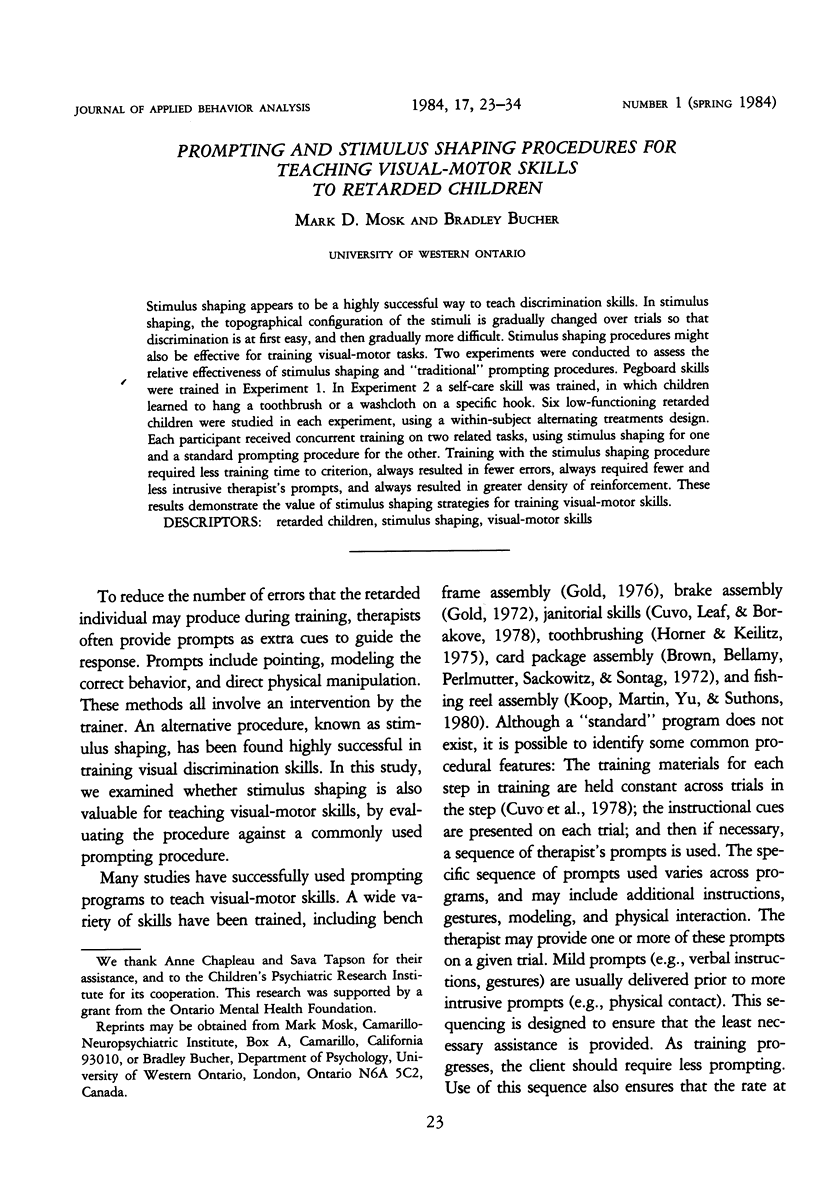

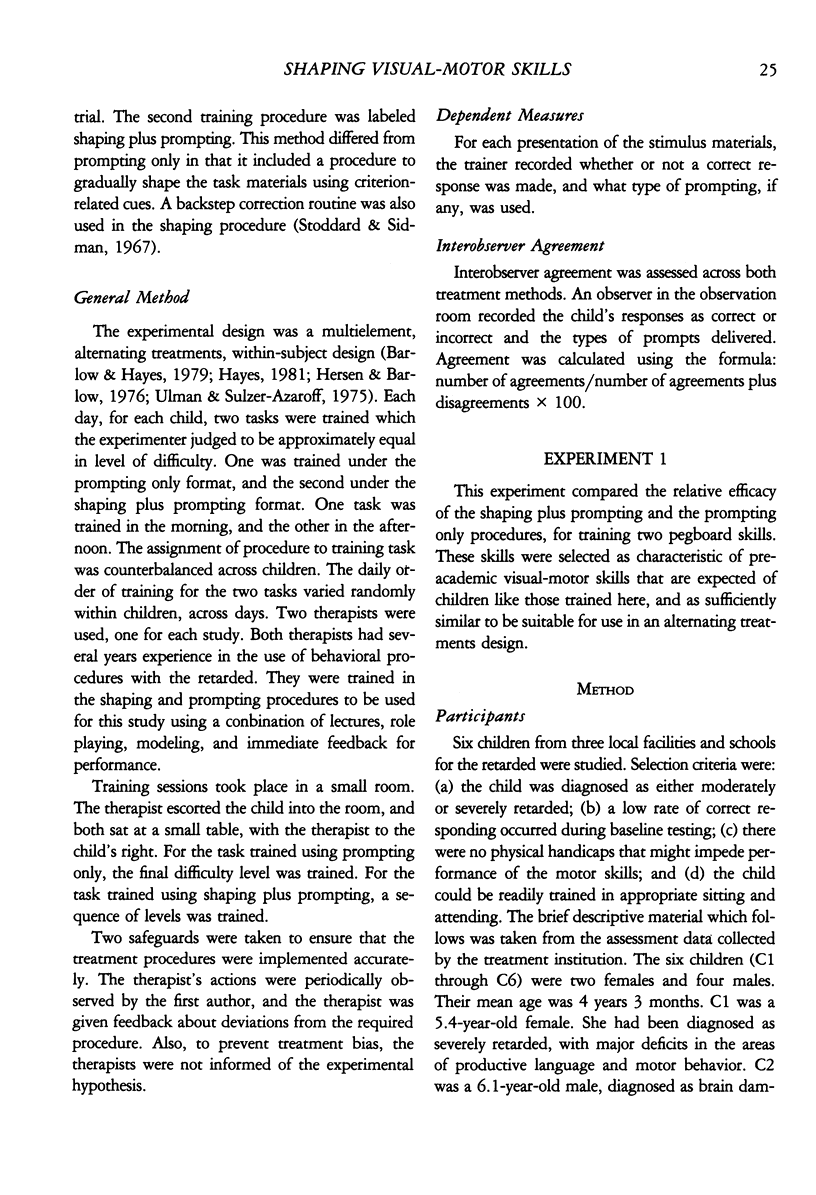

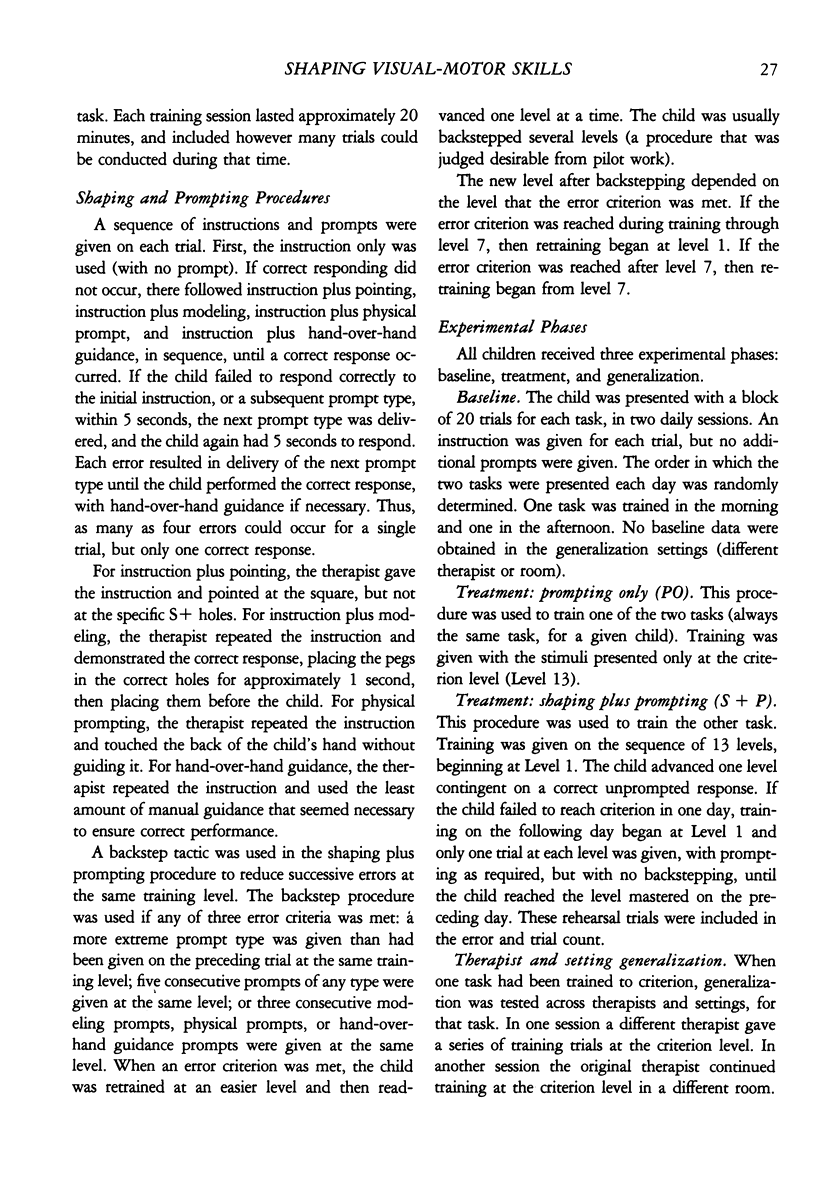

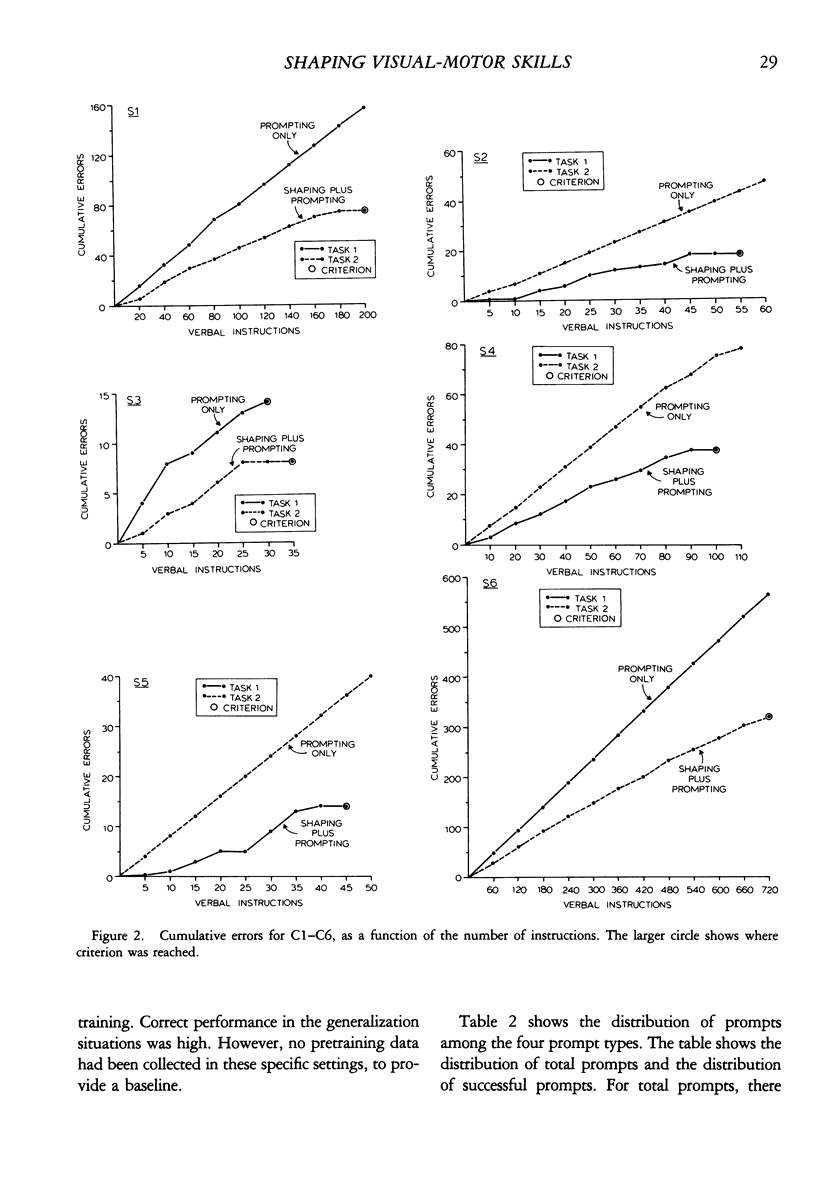
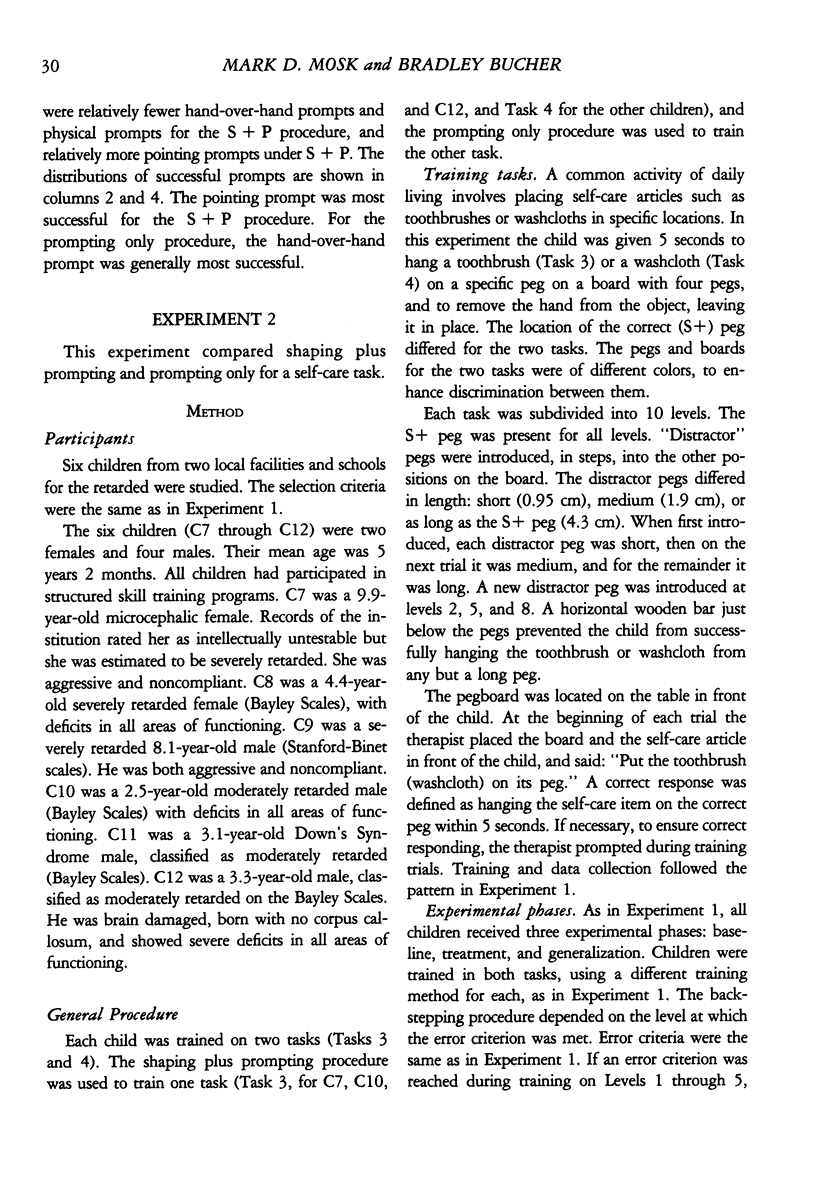
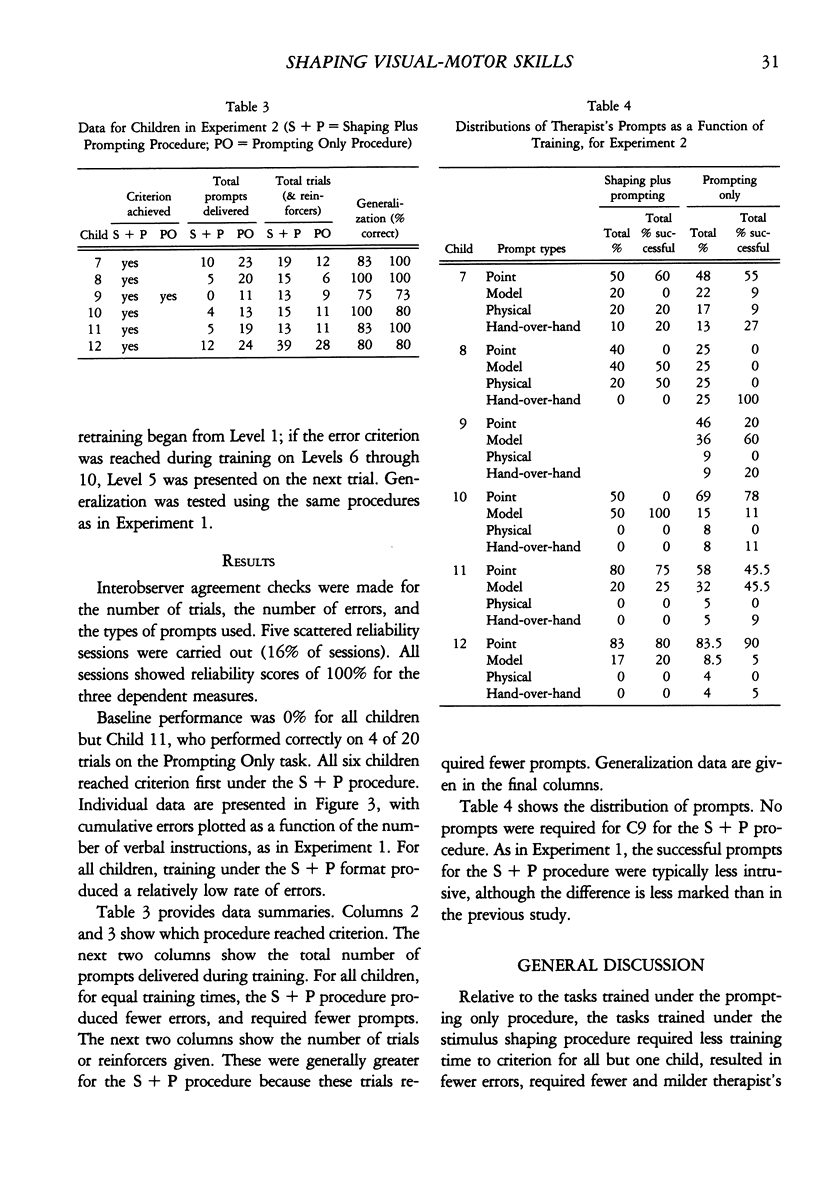
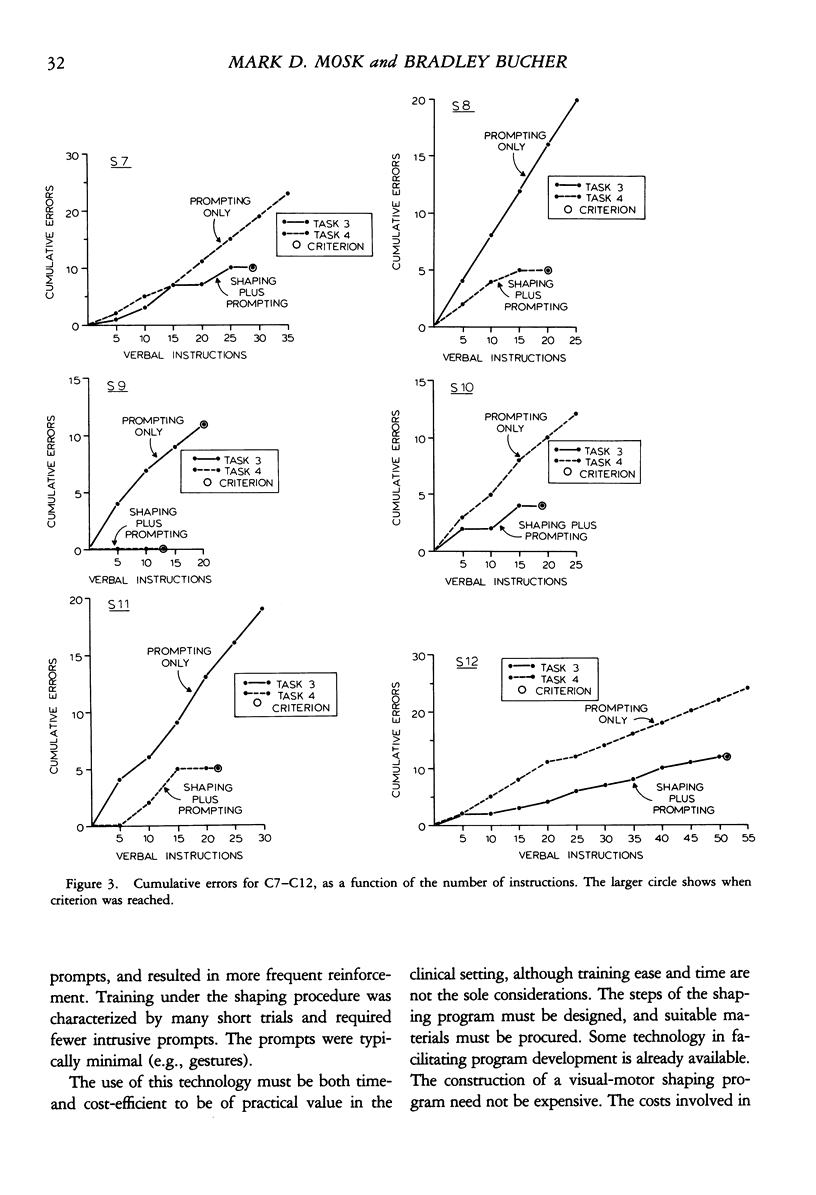

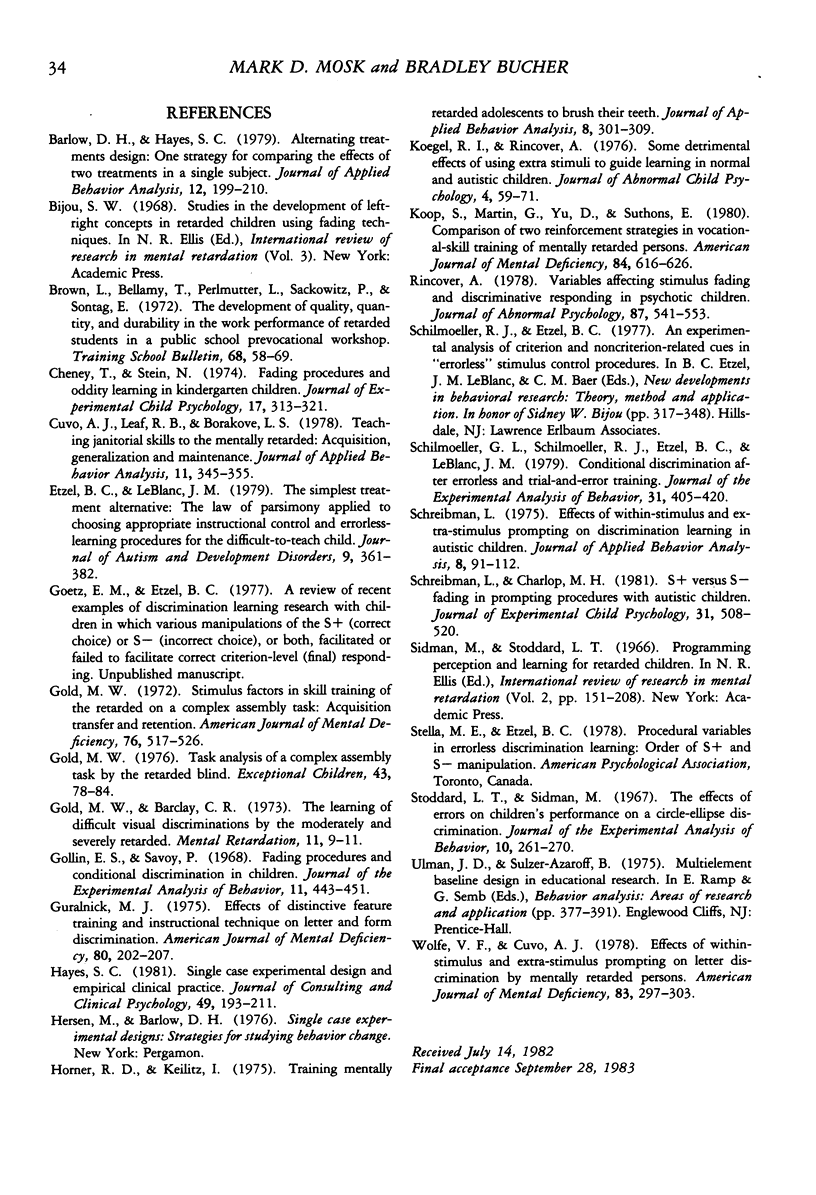
Selected References
These references are in PubMed. This may not be the complete list of references from this article.
- Barlow D. H., Hayes S. C. Alternating treatments design: one strategy for comparing the effects of two treatments in a single subject. J Appl Behav Anal. 1979 Summer;12(2):199–210. doi: 10.1901/jaba.1979.12-199. [DOI] [PMC free article] [PubMed] [Google Scholar]
- Brown L., Bellamy T., Perlmutter L., Sackowitz P., Sontag E. The development of quality, quantity and durability in the work performance of retarded students in a public school prevocational workshop. Train Sch Bull (Vinel) 1972 Aug;69(2):58–69. [PubMed] [Google Scholar]
- Cuvo A. J., Leaf R. B., Borakove L. S. Teaching janitorial skills to the mentally retarded: acquisition, generalization, and maintenance. J Appl Behav Anal. 1978 Fall;11(3):345–355. doi: 10.1901/jaba.1978.11-345. [DOI] [PMC free article] [PubMed] [Google Scholar]
- Etzel B. C., LeBlanc J. M. The simplest treatment alternative: the law of parsimony applied to choosing appropriate instructional control and errorless-learning procedures for the difficult-to-teach child. J Autism Dev Disord. 1979 Dec;9(4):361–382. doi: 10.1007/BF01531445. [DOI] [PubMed] [Google Scholar]
- Gold M. W., Barclay C. R. The learning of difficult visual discriminations by the moderately and severely retarded. Ment Retard. 1973 Apr;11(2):9–11. [PubMed] [Google Scholar]
- Gold M. W. Stimulus factors in skill training of retarded adolescents on a complex assembly task: acquisition, transfer, and retention. Am J Ment Defic. 1972 Mar;76(5):517–526. [PubMed] [Google Scholar]
- Gold M. W. Task analysis of a complex assembly task by the retarded blind. Except Child. 1976 Oct;43(2):78–84. doi: 10.1177/001440297604300203. [DOI] [PubMed] [Google Scholar]
- Gollin E. S., Savoy P. Fading procedures and conditional discrimination in children. J Exp Anal Behav. 1968 Jul;11(4):443–451. doi: 10.1901/jeab.1968.11-443. [DOI] [PMC free article] [PubMed] [Google Scholar]
- Guralnick M. J. Effects of distinctive-feature training and instructional technique on letter and form discrimination. Am J Ment Defic. 1975 Sep;80(2):202–207. [PubMed] [Google Scholar]
- Hayes S. C. Single case experimental design and empirical clinical practice. J Consult Clin Psychol. 1981 Apr;49(2):193–211. doi: 10.1037//0022-006x.49.2.193. [DOI] [PubMed] [Google Scholar]
- Horner R. D., Keilitz I. Training mentally retarded adolescents to brush their teeth. J Appl Behav Anal. 1975 Fall;8(3):301–309. doi: 10.1901/jaba.1975.8-301. [DOI] [PMC free article] [PubMed] [Google Scholar]
- Koegel R. L., Rincover A. Some detrimental effects of using extra stimuli to guide learning in normal and autistic children. J Abnorm Child Psychol. 1976;4(1):59–71. doi: 10.1007/BF00917605. [DOI] [PubMed] [Google Scholar]
- Koop S., Martin G., Yu D., Suthons E. Comparison of two reinforcement strategies in vocational-skill training of mentally retarded persons. Am J Ment Defic. 1980 May;84(6):616–626. [PubMed] [Google Scholar]
- Rincover A. Variables affecting stimulus fading and discriminative responding in psychotic children. J Abnorm Psychol. 1978 Oct;87(5):541–553. doi: 10.1037//0021-843x.87.5.541. [DOI] [PubMed] [Google Scholar]
- Schilmoeller G. L., Schilmoeller K. J., Etzel B. C., LeBlanc J. M. Conditional discrimination after errorless and trial-and-error training. J Exp Anal Behav. 1979 May;31(3):405–420. doi: 10.1901/jeab.1979.31-405. [DOI] [PMC free article] [PubMed] [Google Scholar]
- Schreibman L., Charlop M. H. S + versus S- fading in prompting procedures with autistic children. J Exp Child Psychol. 1981 Jun;31(3):508–520. doi: 10.1016/0022-0965(81)90033-3. [DOI] [PubMed] [Google Scholar]
- Schreibman L. Effects of within-stimulus and extra-stimulus prompting on discrimination learning in autistic children. J Appl Behav Anal. 1975 Spring;8(1):91–112. doi: 10.1901/jaba.1975.8-91. [DOI] [PMC free article] [PubMed] [Google Scholar]
- Stoddard L. T., Sidman M. The effects of errors on children's performance on a circle-ellipse discrimination. J Exp Anal Behav. 1967 May;10(3):261–270. doi: 10.1901/jeab.1967.10-261. [DOI] [PMC free article] [PubMed] [Google Scholar]
- Wolfe V. F., Cuvo A. J. Effects of within-stimulus and extra-stimulus prompting of letter discrimination by mentally retarded persons. Am J Ment Defic. 1978 Nov;83(3):297–303. [PubMed] [Google Scholar]


